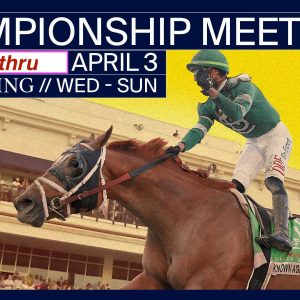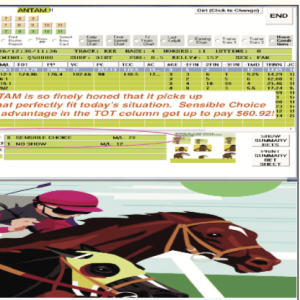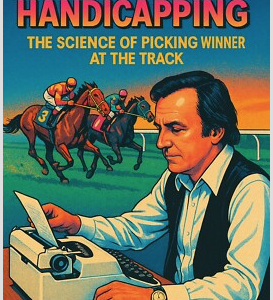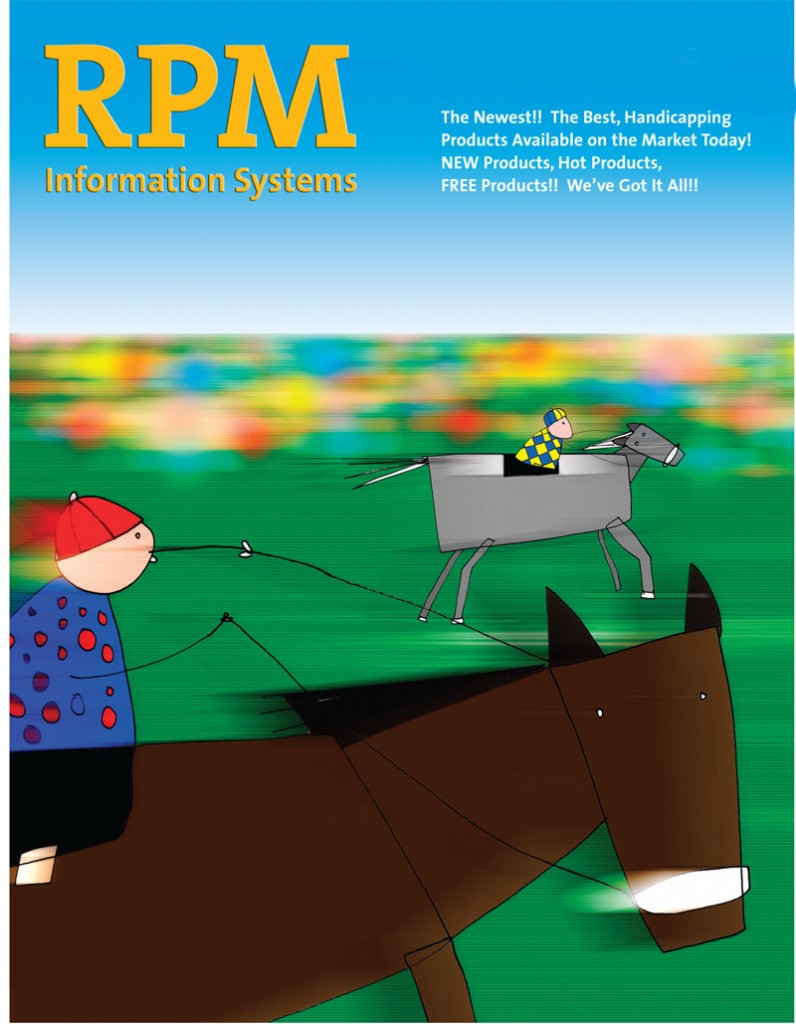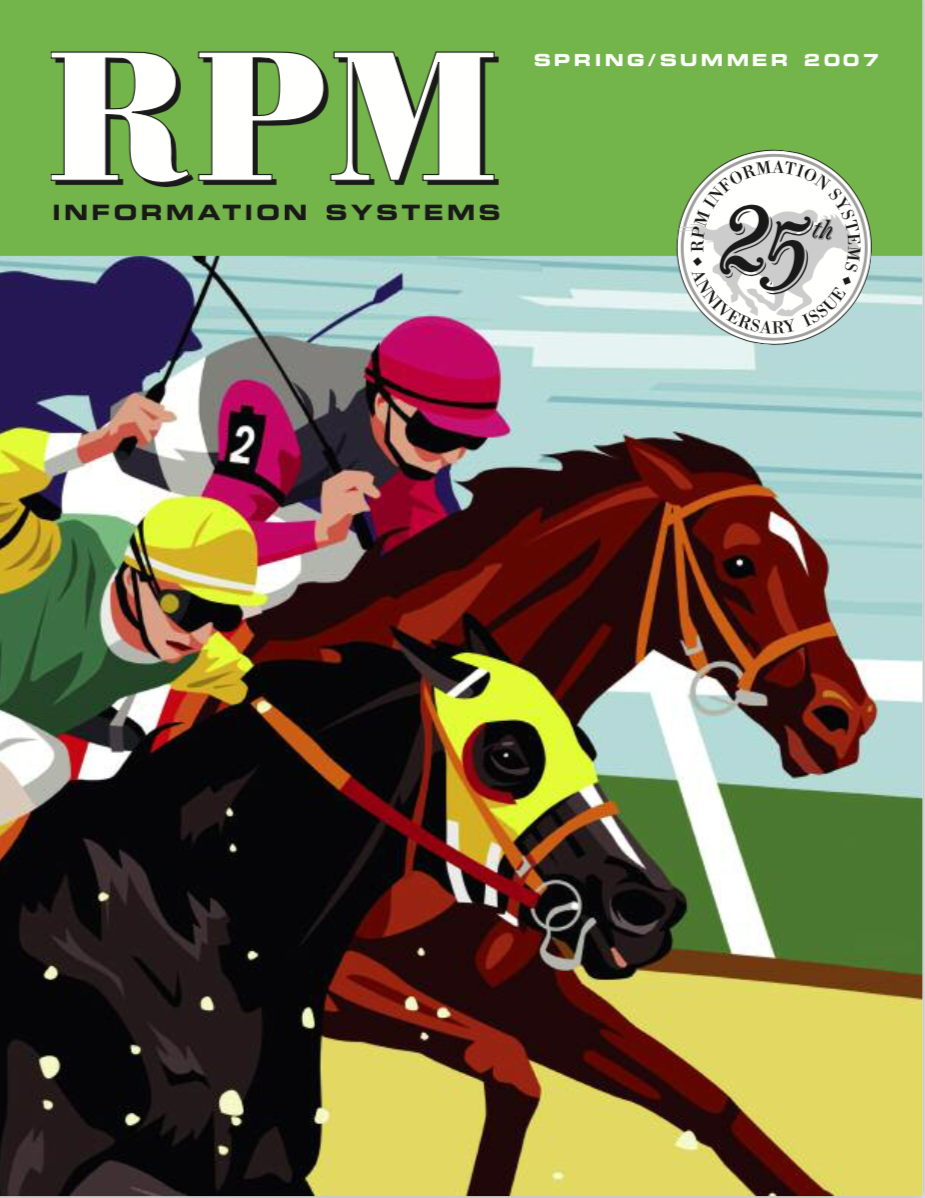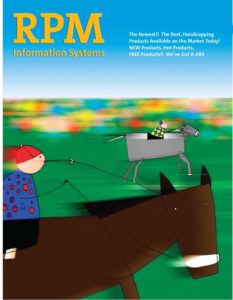$97.50

So now you have a program that can ‘think’ for you, and solve the age-old problem of determining when a recent winner is most likely to repeat.
Description
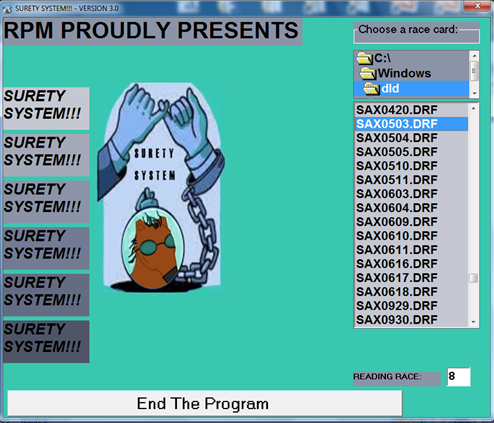
Racing authors and expert handicappers have glorified the ‘Repeater’, i.e., a horse who won his most recent race, for many, many decades now.
“Thanks for this. This is one of the pieces of the puzzle I was definitely missing. I have read stats where horses who won their last race come back to win again only about 1/5 of the time. But Surety insures that you can near double that number by focusing on factors most common to repeat winners. Love the in the money consistency and high average win/place mutuels.” Darryl Singer, Hot Springs, AR
📺See the Video Click Here___

But simply wagering on a horse who won his last race is a losing proposition long term. >>However, if a repeater meets certain other criteria, it has been demonstrated that the chances of that horse winning again almost doubles, and he will run at least 3rd close to 87% of the time.
As far as we can tell, this theory about ‘qualifying’ likelier repeaters first came to light in E.W. Donaldson’s book, Consistent Handicapping Profits, which he authored in 1936. He found, for instance, that horses stepping up more than one level in class were not likely to repeat, but horses coming back at the same level, who had won by a length or more last out, won right back at a solid clip. And he discovered many factors and quirks that increased the hit rate of recent winners as well.
Of all the factors which influence the outcome of a horse race, condition is, perhaps the most important.
It doesn’t matter, for instance, how fast a horse may have been last year, or six months ago….if it is not in condition for today’s race, it will not even closely approach its former high speed. Or if it does show some early speed, it will be unable to maintain it for any conclusive distance.
By the same token, a very classy horse, if not in condition, could not reasonably be expected to show to advantage against even an ordinary field. It would, in fact, look very dismal if the cheapies were at racing peak.
Unfortunately, condition is not always easy to evaluate. Simply because a horse is put into training for the racing wars does not necessarily mean that it has responded, or will respond, to its training program. Nor does the fact that it may have had a ‘tightener’….or two or three of them….guarantee us that it is now on edge and capable of running to expected speed figures, or showing its true class.

👉👉However, there is one way we can be sure we have our feet on pretty solid ground, as far as condition is concerned, and that is with the fairly recent winners….or to be more exacting, with certain types of fairly recent winners.
Still generalizing then, a horse that has produced a winning effort in its most recent outing can be assumed to be in condition, and for the purpose of this system we will confine our attention to these horses only.
👉👉Just another repeater system, you say? Don’t you believe it, unless you can shrug off 36% to 42% winners at good average mutuels as just another system.
This is strictly a spot play method, of course, and the player who must have lots of action might want to play several tracks if he/she wishes. On the other hand, he/she can use it in conjunction with any other systems of choice, likely to good advantage.
Winners as a rule do not repeat often enough to make following them a profitable pastime, but there are certain kinds of winners that are reliable for a playback next time out.
👉👉To put it another way, it is the manner in which a horse won its last race that tells us whether it is likely to repeat or not.
I have found that there are three different ways a race can be won and still leave the winner sharp enough to be a good investment on its next trip to the post. I have arranged these winners into three general types, so they will be recognizable at a glance, even to the novice.
👉Of course, if you are using the software, you can find plays at several tracks in just minutes.
In order to do this, and make sure that the newer hands will understand, let’s indulge in a little elementary exploration of the The Brisnet Single Data File which, of course, is the ‘engine’ that runs all of our Software programs. Now, you don’t have to worry about any of this with the software, since it does all the work, but this explanation will give you a good idea of the program’s selection criteria.
In their electronic past performance charts, between the impost, or weight column on the left, and the jockeys’ names on the right, there are five columns of figures representing the running position of the horse whose charts we are examining at the first call, 2nd call, pre-stretch call, in-stretch call, and at finish call.
Only these five ‘calls’ are given no matter what the distance of the race. Most of the necessary information is contained in these five columns, but in addition, we must know at what distance the horse won last time out, and whether on a fast (ft) or a good (gd) track. While most of these calls are on the main screen, you can also view them by selecting the ‘ShowPP’ button at the top of the screen and choose the horse you wish to view.
Since we are going to consider only those horses that won last time out, we are interested only in the top line of the five ‘call’ columns, and our first glance is at the finish column. We will, of course, pass up maiden races.
The Surety Software is effective at all Class Levels, from Stakes to Low Level Claimers. The first two examples below are from this year’s Kentucky Derby card. Also on that card, Surety tabbed another winner at $9.00, six 2nds at odds of 2/1 to 7/1, and a 3rd at 7/1, Forever Young in the Derby who missed by two noses.
On the Kentucky Oaks card the day before, Surety had five winners, a 2nd and a 3rd, out of 9 playable races.
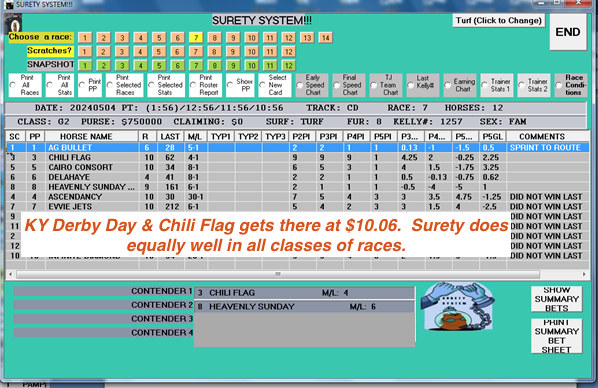
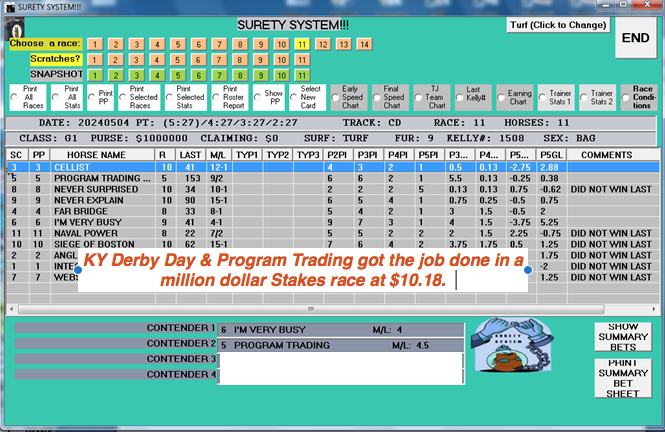

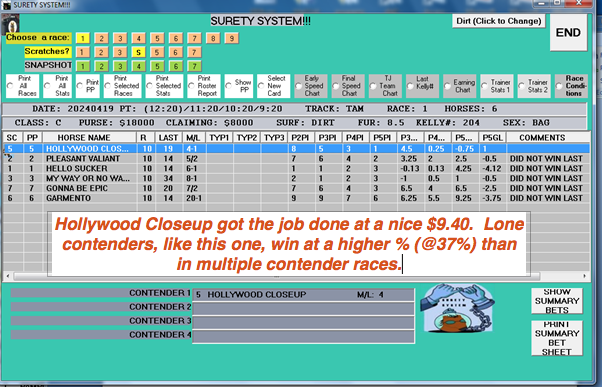
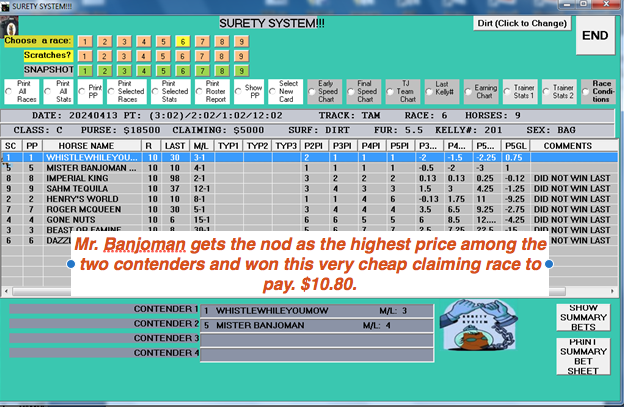

>>Also, as mentioned above, top Surety contenders run at least 3rd a very high % of the time, some at great prices. In just the prior ten days (from today, 5/16/24), we found horses who ran 3rd at 25/1, 10/1, 8/1, 18/1 & 17/1, and horses who placed at 45/1, 27/1, 14/1, two at 12/1 and several in the 7/1 to 11/1 range. So backing the plays up to at least place makes perfect sense.
Surety gets plenty of lower priced winners, etc., as well, and if you are a show parlayer (using a modifed show parlay, like Hammering the Chalk, Parlay Power Match, etc.), you know what the rewards are when you suddenly get a horse that pays high single digits to double digits to show, and that will happen pretty frequently with this program.
“The ‘Repeater’ quandary has long baffled most horseplayers. One thing that is almost certain is that the public will generally notice a recent win and then perhaps overbet that horse regardless of what else he may have going for him. And that is a losing proposition. The Surety approach insures that the recent winner has several other factors present, that make him a more likely repeater. Excellent research done here and the software is definitely worth opening up your wallets for.” Dave Schartz, Handicapping Research Lab

So now you have a program that can ‘think’ for you, and solve the age-old problem of determining when a recent winner is most likely to repeat.
With a win % in the high 30s and an average win mutuel in the $10 range, horses the program determine as ‘best bets’ (average two best bets per racecards, though the other top selections pop often as well) produce a nice return. High place and show hit rate as well and also works very well on Quarter Horses.
And it is definitely priced right at just $97.50.
Call us at 1-800-696-0067 or order from our website. And do call with any questions. Thanks, Dave & Len


